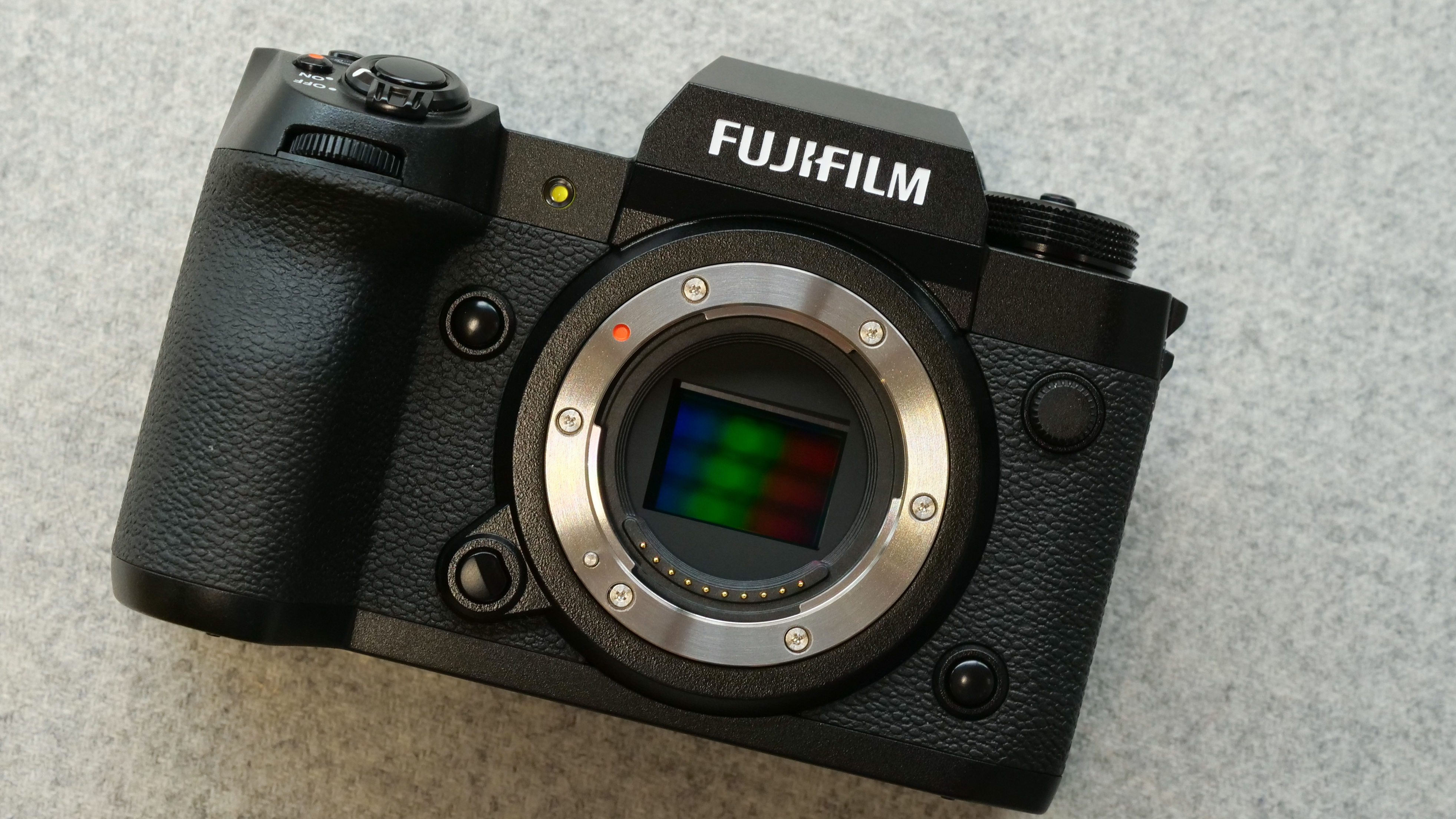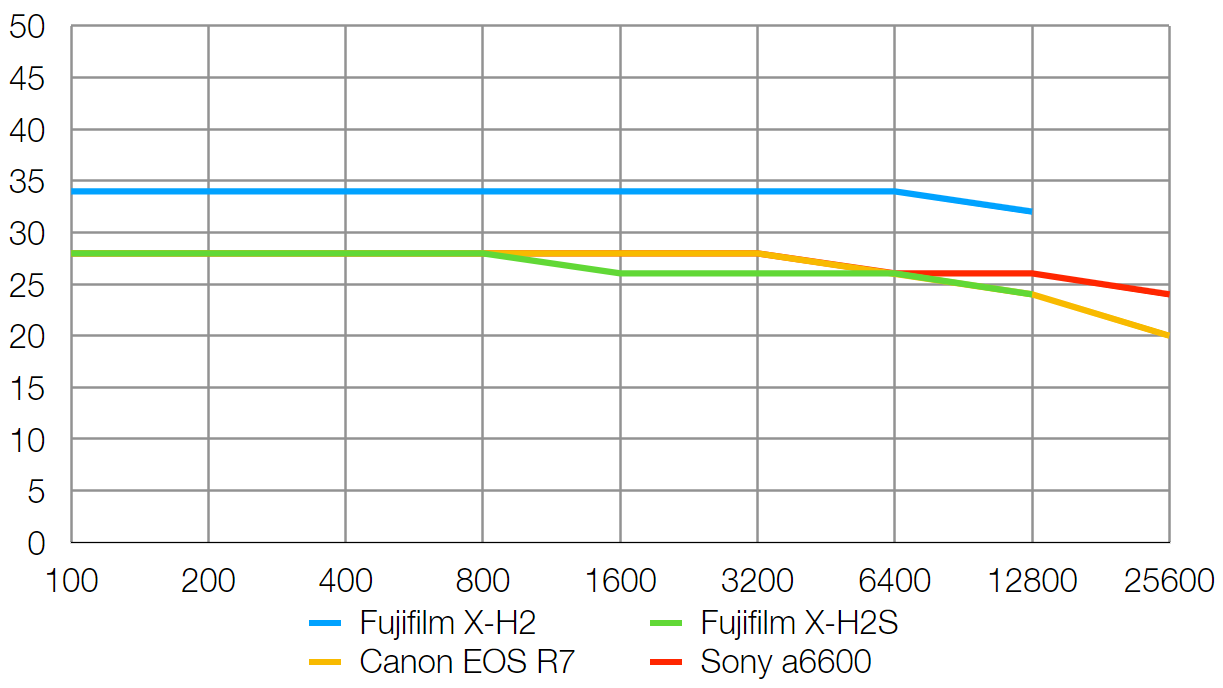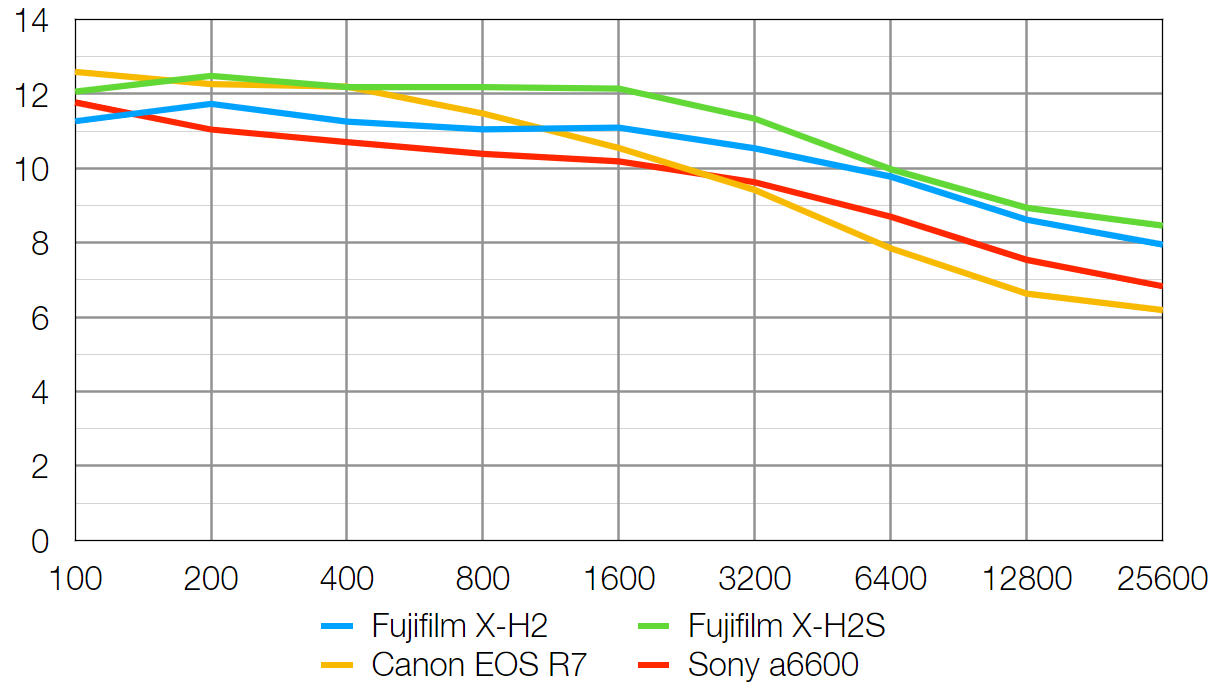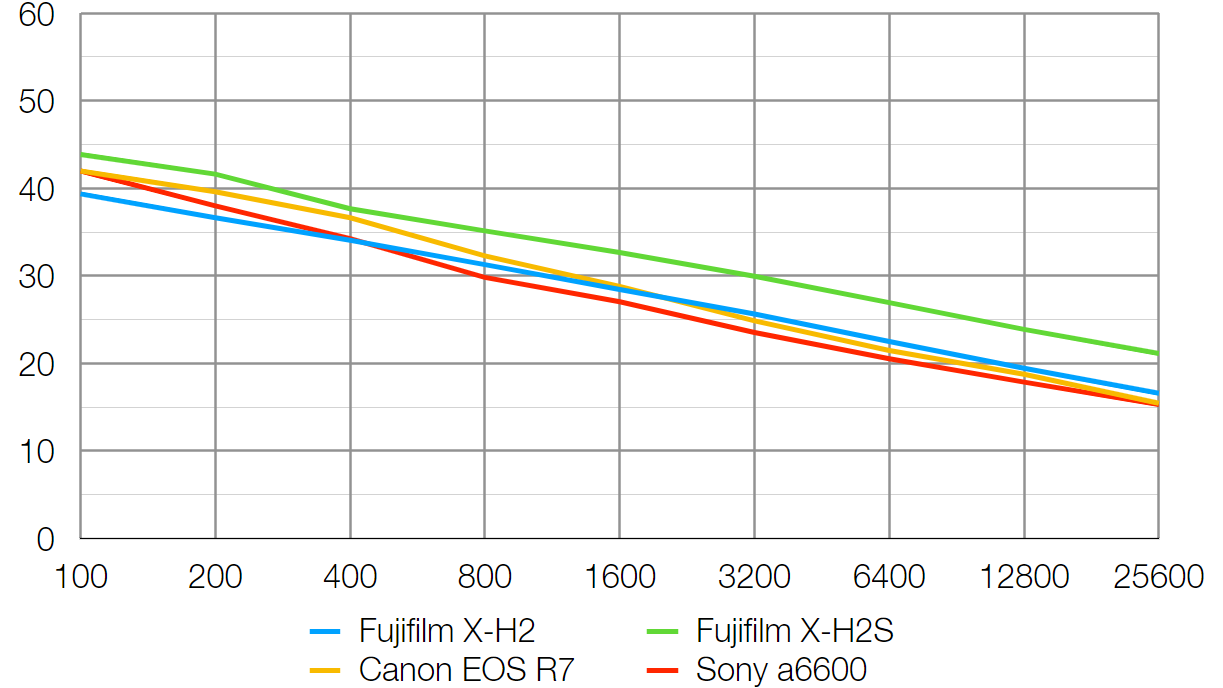Fujifilm just broke all the rules for APS-C camera sensors
We thought the real-world resolution ceiling for APS-C sensors had been reached. We were wrong

For a very long time (or so it felt), 24MP was the megapixel ‘ceiling’ for APS-C cameras. Fujifilm pushed that up to 26MP with its fourth-generation X-Trans sensors and Canon raised the bar even further with the 32.5MP sensor in the EOS 90D, EOS M6 Mark II and more recently the EOS R7.
However, Fujifilm’s 26MP sensor only ever seemed a nominal increase over the ‘standard’ 24MP, and while Canon’s sensor offered a substantial numerical increase in pixels, our lab tests never revealed a corresponding increase in real-world resolution.
So on that technological trajectory, we might have expected the 40MP Fujifilm X-H2 to deliver improved resolution again, but by an ever diminishing margin.
That didn’t happen.
As our Fujifilm X-H2 lab results show, Fujifilm’s new X-Trans 5 40MP sensor delivers an almost linear improvement in resolution over its lower-resolution APS-C rivals. You can read our full Fujifilm X-H2 review to see what we think of Fujifilm's new high-resolution professional camera, but here are the testing highlights.
Our lab data compares it to the 26MP Fujifilm X-H2S, the 32.5MP Canon EOS R7 and the now decidedly dated Sony A6600, the X-H2’s nearest rivals, and the results are telling.
Fujifilm X-H2 resolution test
With a peak resolution score of 3400 line widths/picture height, held all the way to ISO 6400, the X-H2 is comfortably clear of all its APS-C rivals, in a format where we're used to seeing only modest differences, if any. We might hope for a higher figure still if we were testing a full frame camera with the same resolution, but the X-H2 still moves APS-C sensor resolution into new territory.
The best camera deals, reviews, product advice, and unmissable photography news, direct to your inbox!
The 32.5MP Canon EOS R7 proved no better than the X-H2S and Sony A6600, despite its higher megapixel count, but we would attribute that to Canon’s use of anti-aliasing filters in its sensor design. These reduce the risk of moiré effects but at the cost of fine detail.
Fujifilm X-H2 dynamic range test
Our lab tests confirm the theoretical drawbacks of higher resolution sensors, notably in dynamic range and noise. Here, the X-H2 does give a little ground to the X-H2S and EOS R7 at low-medium ISOs, but claws it back at ISO 800 and beyond, pushing the EOS R7 back into third place.
Fujifilm X-H2 noise test
For a given sensor size, increased resolution means smaller photosites and more noise, and the X-H2 runs true to form here, but by ISO 800 again, it’s matching the EOS R7 and Sony A6600. It’s a pretty small noise ‘penalty’ for such a large increase in resolution.
Fujifilm will quite rightly say that the X-H2S is designed for speed and low light and the X-H2 is designed for resolution. That’s quite right. And it’s to the X-H2’s credit that it gives so little ground in dynamic range and noise to achieve it.
We thought that APS-C sensors had reached their resolution limit, especially with the lack of any significant increase in real-world resolution from Canon’s 32.5MP sensor.
But the Fujifilm X-H2 has blown that idea out of the water, with resolution superior to all but a handful of full frame and medium format cameras and at a price that easily undercuts them all.
If anyone was thinking that APS-C had had its day and that full frame was the future, then Fujifilm has just blown that idea out of the water.
• Preorder the X-H2 at BHPhoto in US, or at Wex in the UK, or at Ted's Cameras in Australia.
Read more:
• Best Fujifilm cameras
• Best professional cameras
• Best mirrorless cameras
• Highest resolution cameras

Rod is an independent photography journalist and editor, and a long-standing Digital Camera World contributor, having previously worked as DCW's Group Reviews editor. Before that he has been technique editor on N-Photo, Head of Testing for the photography division and Camera Channel editor on TechRadar, as well as contributing to many other publications. He has been writing about photography technique, photo editing and digital cameras since they first appeared, and before that began his career writing about film photography. He has used and reviewed practically every interchangeable lens camera launched in the past 20 years, from entry-level DSLRs to medium format cameras, together with lenses, tripods, gimbals, light meters, camera bags and more. Rod has his own camera gear blog at fotovolo.com but also writes about photo-editing applications and techniques at lifeafterphotoshop.com



